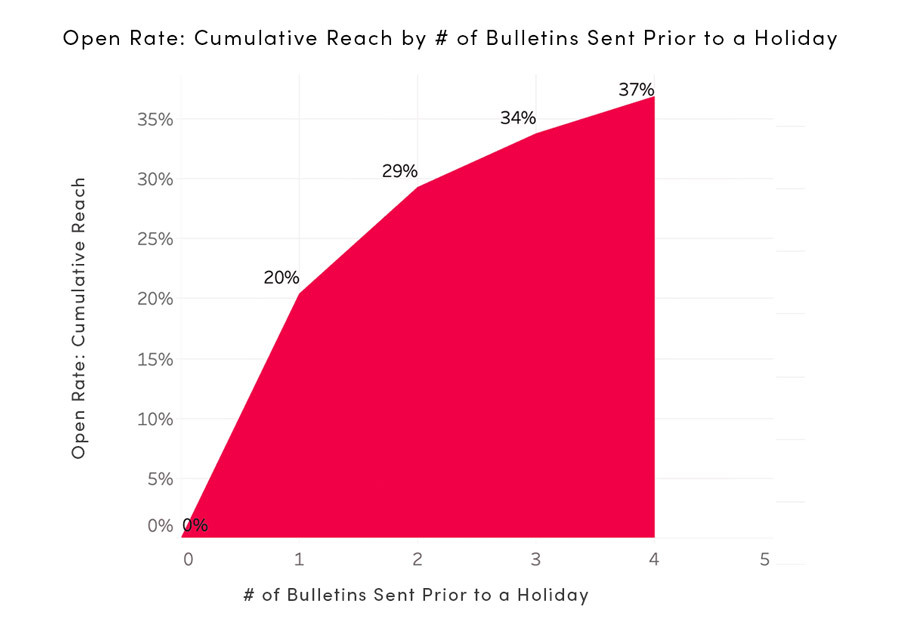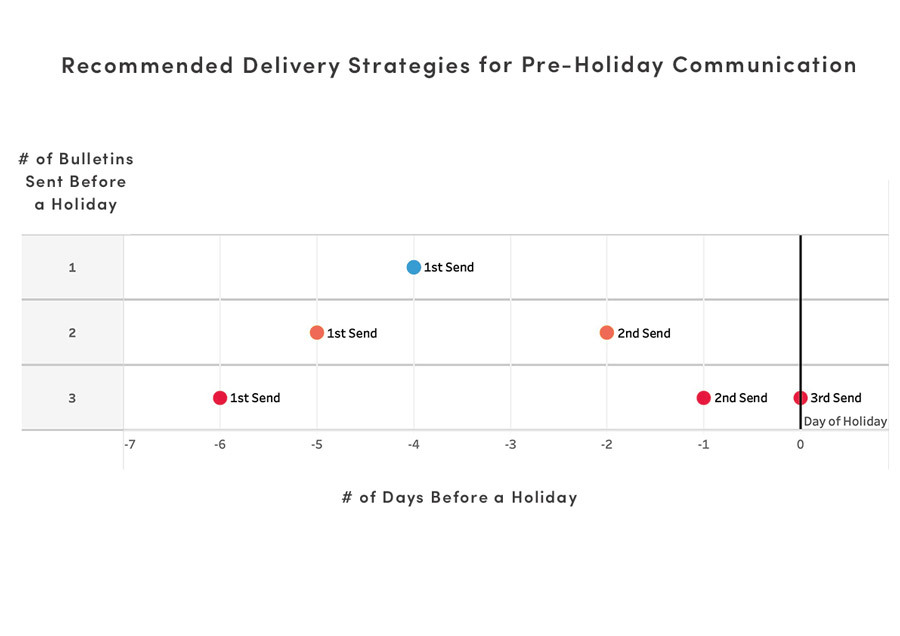
Holidays are often seen as a chance to relax, an opportunity for reflection thanks to a day or two away from the hectic flow of the regular workplace. But without proper preparation and communication from transportation and transit agencies, holidays can also lead to unpleasant surprises and disrupted plans. A three-day weekend often comes with route changes, lower vehicle availability, more traffic, and closed offices that can leave riders and drivers confused and angry.
Maintaining effective communication around holiday scheduling is critical to avoiding snags and hassles for both riders and transit managers. When to notify riders and drivers of holiday changes in a way that maximizes the reach of the message can be a tricky task.
That’s where data science comes in. The Data Science team at Granicus took a deep dive into govDelivery bulletins that Transit and Transportation customers have sent leading up to holidays. Thanks to having a large number of customers in the space, it’s possible to see the different effects from a variety of sending strategies.
Here are some of the key takeaways:

 What should bulletins communicate?
What should bulletins communicate?Knowing when, how frequently, and what to include in holiday-related messaging can make a significant difference in how riders prepare to use transit and how drivers approach holiday travel. By leveraging the data generated by Granicus’ large number of government customers, transportation and transit departments can develop best practices and strategies that will result in less stressful holidays in the future for both their departments, drivers and riders.